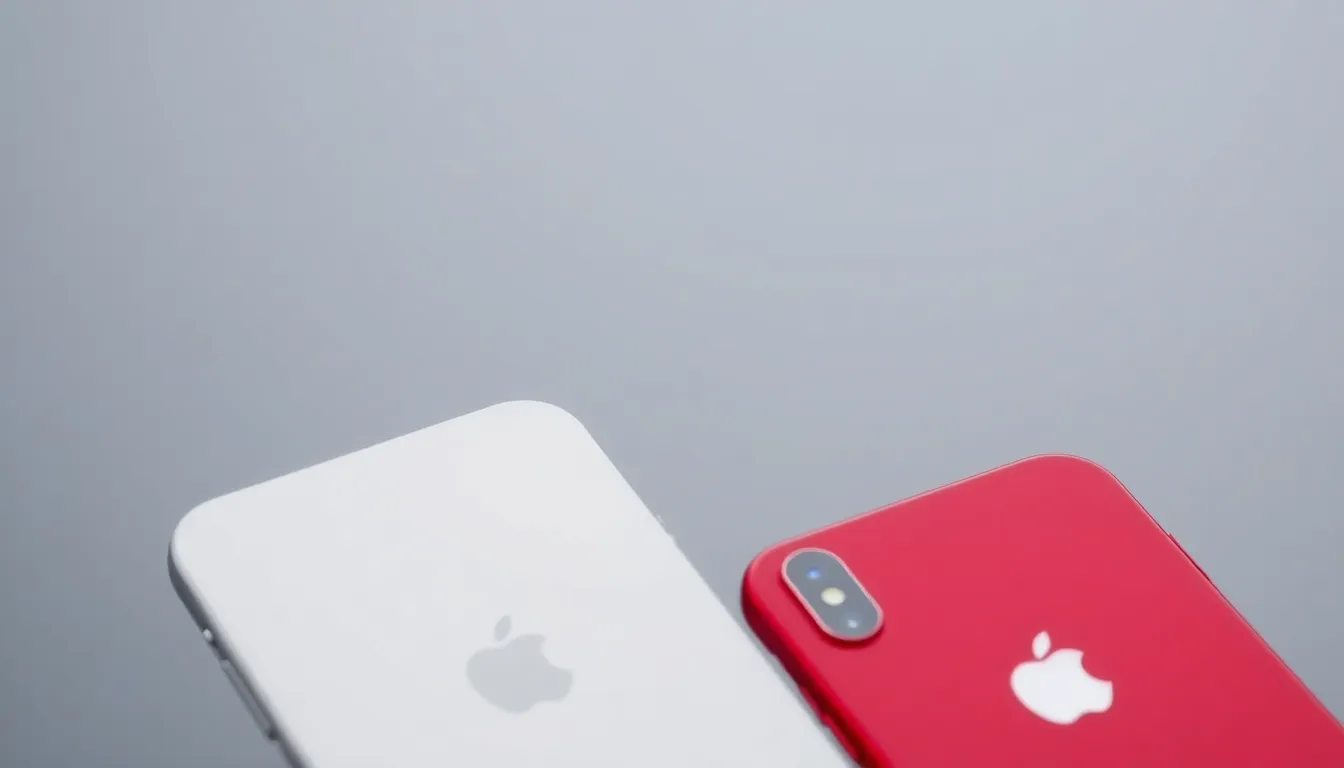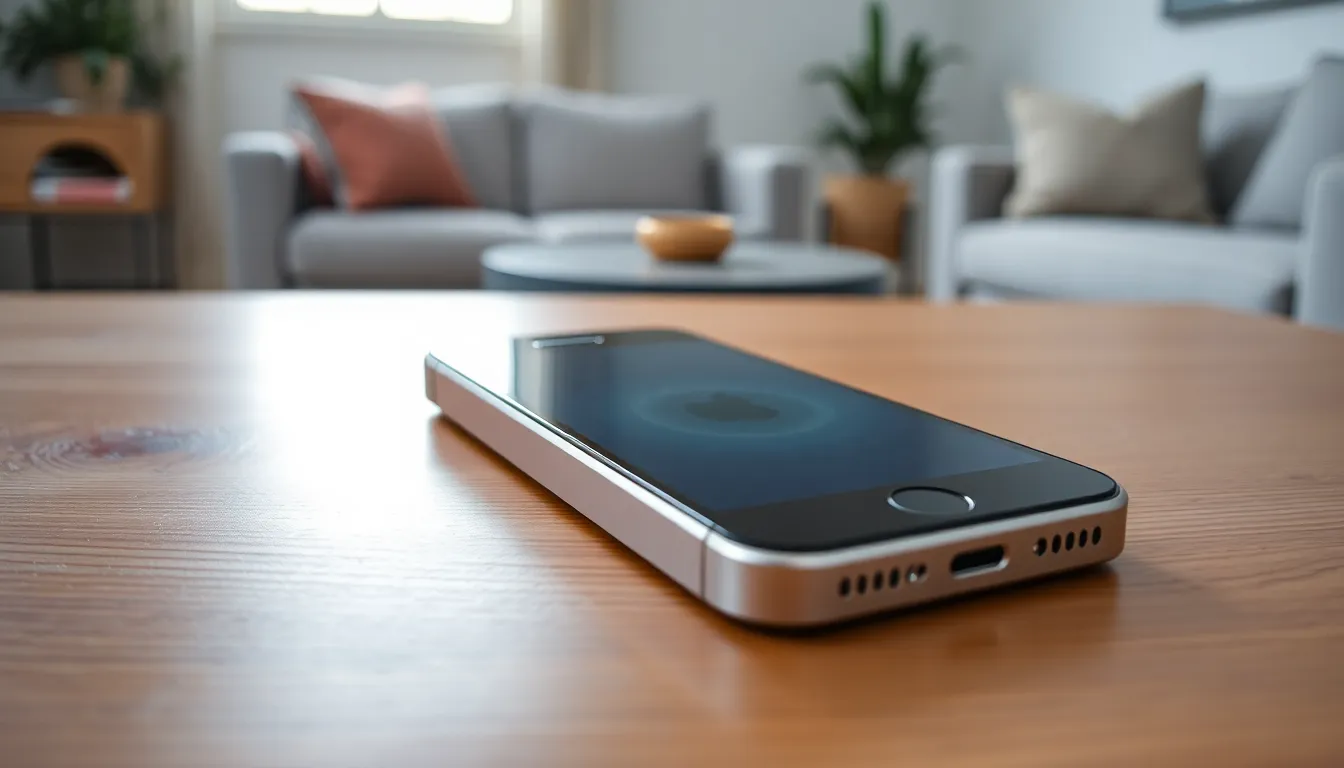In the ever-evolving world of smartphones, the iPhone SE 2nd generation stands out like a classic car in a sea of electric vehicles. Launched in 2020, this compact powerhouse packs a punch with its impressive performance and budget-friendly price. It’s like finding a hidden gem in the tech universe—small enough to fit in your pocket but powerful enough to handle anything from scrolling memes to video calls with Grandma.
Table of Contents
ToggleOverview of iPhone SE 2nd Generation
The iPhone SE 2nd generation occupies a distinct position in the smartphone landscape. This model launched in April 2020, appeals to users seeking a powerful, compact device.
Release Year
Apple announced the iPhone SE 2nd generation on April 15, 2020. The device became available for purchase on April 24, 2020. This timing aligned with consumer demand for affordable smartphones during fluctuating economic conditions. Market response indicated a strong interest in a budget-friendly option boasting advanced technology.
Key Features
This model features a 4.7-inch Retina HD display, offering vibrant colors and sharp details. It operates on the A13 Bionic chip, ensuring smooth performance for apps and games. A single 12-megapixel rear camera provides excellent photography capabilities, including Portrait mode and Smart HDR. This device also supports wireless charging and comes in various storage options, including 64GB, 128GB, and 256GB. Additionally, it incorporates Touch ID for secure unlocking and convenient payments.
Design and Build Quality

The design of the iPhone SE 2nd generation emphasizes a classic aesthetic combined with modern performance. It boasts a sleek and sturdy build, making it a reliable device for everyday use.
Dimensions and Weight
The iPhone SE measures 138.4 mm in height, 67.3 mm in width, and 7.3 mm in depth. It weighs 148 grams, providing a lightweight and comfortable experience for users. Its compact size allows for easy one-handed operation, appealing to those who prefer smaller smartphones. The design incorporates high-quality glass and aluminum materials, ensuring durability while maintaining a refined look.
Color Options
Color choices for the iPhone SE 2nd generation include black, white, and (PRODUCT)RED. Each color reflects a distinct personality, catering to various preferences. Consumers appreciate the classic black for its timeless appeal, while white offers a clean, modern touch. The (PRODUCT)RED variant supports global health initiatives, allowing users to contribute to important causes through their purchase. Color options enhance personalization, making the device feel unique to each owner.
Performance and Specifications
The iPhone SE 2nd generation excels in performance through its advanced specifications.
Processor and RAM
Equipped with the A13 Bionic chip, this device delivers top-tier processing power. The A13 chip ensures seamless multitasking and smooth operation in demanding applications. With 3GB of RAM, it supports efficient performance across various tasks, from gaming to media consumption. Users experience quick app launches and efficient usage of resources, making multitasking enjoyable. This combination of the A13 chip and adequate RAM enhances overall functionality, catering to those who value performance in a compact smartphone.
Camera Capabilities
A 12-megapixel rear camera serves as a standout feature of the iPhone SE 2nd generation. It includes Portrait mode and Smart HDR, allowing users to capture stunning photos with depth and richness. The camera’s capabilities extend to 4K video recording at 60 fps, making it suitable for high-quality video content. Users appreciate the ease of taking sharp photos with vivid colors, even in challenging lighting environments. This device’s camera features enhance creativity, catering to enthusiasts and casual users alike.
Comparison with Other iPhone Models
The iPhone SE 2nd generation competes effectively with other iPhone models, delivering both performance and affordability.
iPhone SE 2nd Generation vs. iPhone 11
The iPhone 11 offers a larger 6.1-inch Liquid Retina display compared to the SE’s 4.7-inch Retina HD display. Users experience improved battery life with the 11, which provides up to 17 hours of video playback, while the SE lasts up to 13 hours. Camera capabilities differ significantly: the iPhone 11 includes a dual-camera setup with Night mode, enhancing low-light photography. In contrast, the SE features a single 12-megapixel camera still capable of excellent photos thanks to the A13 Bionic chip. Pricing also reflects their differences; iPhone 11 starts at a higher base price than the SE. Durability remains comparable, as both models support water resistance up to 1 meter for 30 minutes.
iPhone SE 2nd Generation vs. iPhone 12
The iPhone 12 stands out with its Super Retina XDR display at 6.1 inches, offering vibrant visuals over the SE’s HD counterpart. Performance gains are clear with the A14 Bionic chip in the 12, which surpasses the SE’s A13 in efficiency and speed. Dual-camera functionality returns with the iPhone 12, including Night mode across both lenses, unlike the single lens on the SE. Battery life improvements are noticeable; the iPhone 12 supports up to 17 hours of video playback like the iPhone 11. Material design varies too; the iPhone 12 features a ceramic shield front for enhanced durability, setting it apart from the SE’s more traditional glass. Pricewise, an increase occurs with the iPhone 12, reflecting its premium positioning in the lineup.
User Experience and Reviews
User feedback on the iPhone SE 2nd generation showcases its strengths and weaknesses. Users appreciate its compact design, which fits comfortably in one hand. The budget-friendly pricing, combined with powerful performance, attracts many buyers. Some mention the lack of features compared to higher-end models, particularly regarding display quality and the absence of 5G capabilities. Battery life often garners mixed reviews; while some users find it satisfactory for daily tasks, others seek longer usage between charges.
Pros and Cons
Several advantages come with the iPhone SE 2nd generation. Users enjoy its smooth performance thanks to the A13 Bionic chip, making multitasking efficient. The camera impresses with its ability to capture high-quality images and videos. Compact size remains a major selling point for those who prefer smaller devices. Nevertheless, certain drawbacks exist. Limited storage options and the lack of advanced features like Face ID may deter some potential buyers. Additionally, battery life doesn’t always meet the expectations of heavy users.
Battery Life and Performance
Battery life of the iPhone SE 2nd generation delivers mixed experiences among users. Typical daily use often yields around 10 to 12 hours, which works well for moderate users. Performance remains a strong suit, thanks to the A13 Bionic chip, enabling seamless operations across various apps. Video playback typically lasts around 13 hours, offering solid entertainment options. While some users report satisfactory experiences, heavier users may find themselves charging more frequently. Overall, the device balances performance with typical battery longevity fairly effectively.
The iPhone SE 2nd generation continues to resonate with users looking for a compact yet powerful smartphone. Launched in April 2020 it offers an impressive blend of performance and affordability. While it may not include some of the advanced features found in newer models the SE still stands out for its classic design and robust capabilities.
With its A13 Bionic chip and high-quality camera it meets the needs of a diverse range of users. Although some may find its battery life and storage options limiting the overall value it provides is undeniable. As a budget-friendly choice in the iPhone lineup the SE 2nd generation remains a compelling option for those who prioritize efficiency without sacrificing quality.




